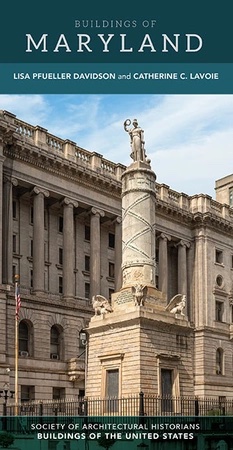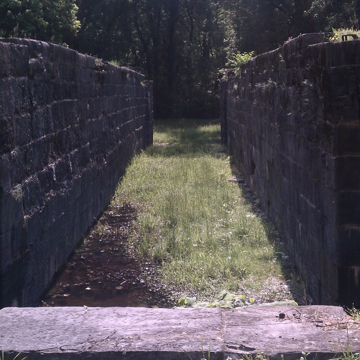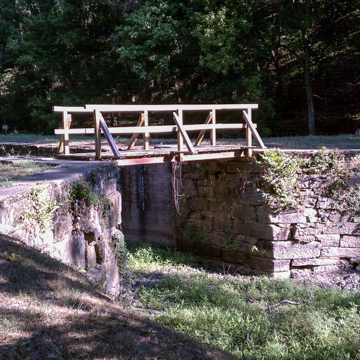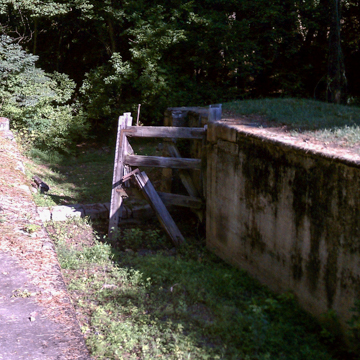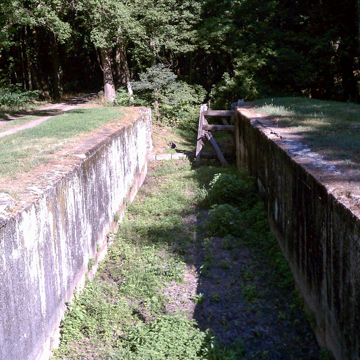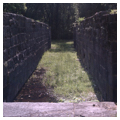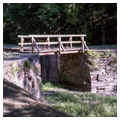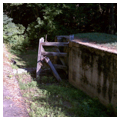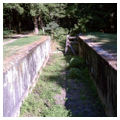Lock 58 is one of thirteen “composite locks” along the Chesapeake and Ohio Canal. To expedite construction and because there was a lack of stone in this section of the canal, composite locks were built of rubble and undressed limestone. Work began in August 1838, but stopped when only forty percent of the section was completed. When work resumed on this portion of the canal, Hunter, Harris and Company subcontracted the completion of the lock to an unknown firm, and it was finally finished in 1850.
To protect the boats from potential damage from the rough stone surface, these locks were lined with two layers of timber: one placed horizontally and one placed vertically. Despite waterproofing attempts with creosote, there was a significant rot problem, and by the turn of the twentieth century, cement liners were being poured in all composite locks. At this particular lock, an inscribed date of “1909” seems to indicate the timing of this operation.

